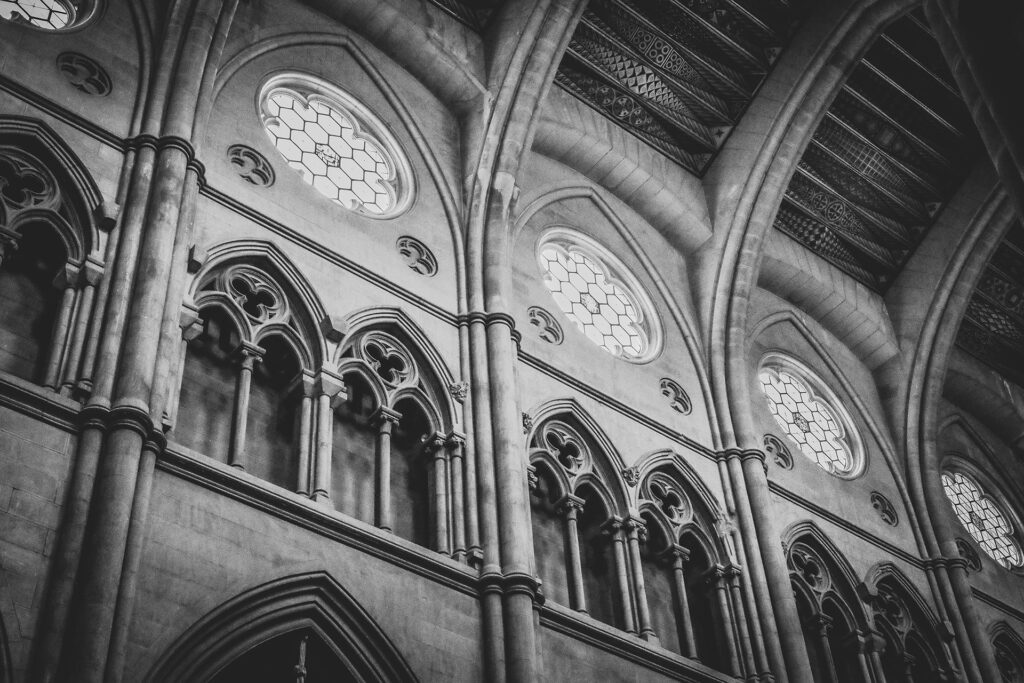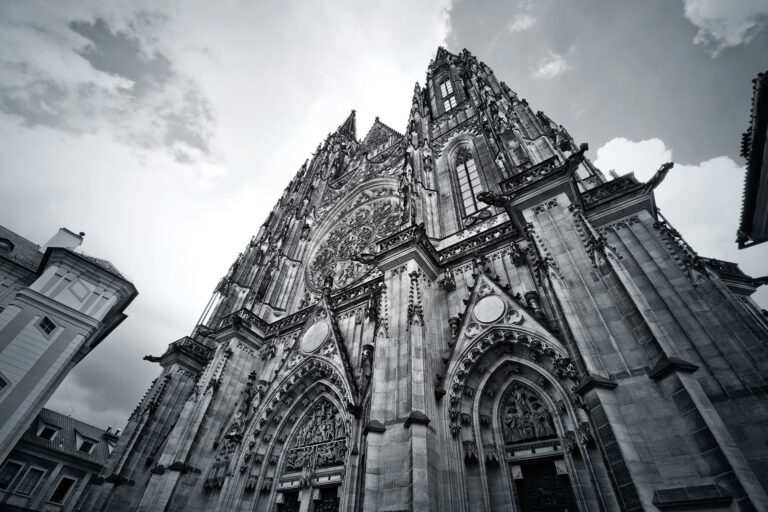
Gothic architecture, as one of the hallmark architectural styles of medieval Europe, did not have a widespread direct influence in Iran. This style, characterized by pointed arches, large stained-glass windows, tall towers, and intricate decorations, was predominantly used in European churches and religious structures.
However, Iranian architecture during various periods, such as the Seljuk, Ilkhanid, and Safavid eras, incorporated certain similar features:
Similarities
– Pointed Arches: Pointed arches are also widely used in Iranian mosques and caravanserais.
– Intricate Decorations: Delicate tilework and muqarnas (stalactite-like decorations) in Iranian architecture are comparable to Gothic decorative complexity.
– Verticality: Tall minarets and domes in Iranian architecture bear visual similarities to Gothic church towers.
Differences
– Function: Gothic architecture was primarily used for churches and Christian religious structures, while Iranian architecture focused on mosques, schools, bazaars, and caravanserais.
– Materials: Gothic architecture typically used stone, whereas brick and tile were more common in Iranian structures.
Indirect Influences and Specific Examples
Although there are no direct instances of Gothic architecture in Iran, there are indirect influences and notable examples of architectural elements inspired by this style, arising from cultural interactions and global architectural trends:
1. Qajar Era and Early Modern Architecture
During the Qajar and early Pahlavi periods, with increased interactions between Iran and Europe, architectural elements such as pointed arches and ornate details became more common in palaces, train stations, and administrative buildings.
– Example: Dar ul-Fonoun School (Tehran) combines traditional Iranian architecture with Western influences.
2. Armenian Churches in Iran
Armenian churches in Isfahan and other regions, influenced by European architecture, often display Gothic elements such as pointed arches and tall towers.
– Example: Vank Cathedral (Isfahan), despite predominantly Iranian-Armenian architecture, features elements inspired by European styles.
3. Interior Architecture of Safavid and Ilkhanid Religious Buildings
Although predating Gothic influence, structural elements such as pointed arches and tall forms in buildings like the Jameh Mosque of Isfahan and Soltaniyeh Dome share visual similarities with Gothic structures.
4. Modernization of Iranian Architecture in the Pahlavi Period
Some government and educational buildings during this period adopted Gothic and Neoclassical influences.
– Example: University of Tehran (Old Faculty of Arts) exhibits a blend of Iranian and European architectural elements.
Conclusion
Although Gothic architecture as a distinct European style did not directly influence Iranian architecture, cultural and historical interactions, especially during the Qajar and Pahlavi periods, introduced certain elements of this style into Iranian architecture. Features such as pointed arches, emphasis on verticality, and intricate decorations are noticeable in some modern buildings and Armenian churches. Additionally, structural similarities between Gothic architecture and Iranian architecture during the Safavid and Ilkhanid periods, although coincidental, reflect deep aesthetic connections between different cultures. These examples demonstrate that Iranian architecture has always maintained its authentic identity while embracing global styles for innovation and development.


No comments yet.